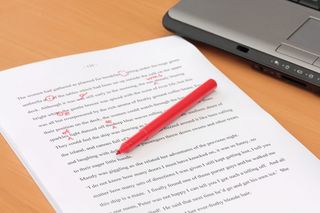
Proofreading
Proofreading
Proofreading is the last quality-control check of a document, and it is not a substitute for copy editing. Copy editing,
like substantive or Structural editing, is the improvement of a work whereas proofreading is the final reading and correction of mistakes after it has been structurally edited, copy edited, designed and typeset.
Proofreading is often vital in preventing embarrassing and expensive mistakes. It involves having a fresh set of eyes to objectively check your work as eyes that have been immersed in a work see what they want to see and not what is actually there. This is a trick of the human mind affecting all writers.
A standard proofread is typically performed on a PDF file, which is then marked up using PDF annotations. It is also possible to proofread a Word document, using Track Changes. Proofreading is a final quality-control exercise to verify that the document is complete in terms of:
- preliminary matter (title and imprint page, table of contents, foreword, preface, illustration lists, tables, acknowledgements)
- end matter (glossary, lists of abbreviations, references, bibliography, index, appendixes)
- body of document (text, illustrative material, footnotes and endnotes, tables, captions)
- links and metadata
- spelling
- typographical, grammatical and punctuation errors
- document conformity with editing style sheets and manuals
A standard proofread is not performed to improve the content or structure of the document but to check that all conventions, guidelines and rules have been complied with. It also spot-checks any remaining errors that the copy editor or typesetter have missed.


